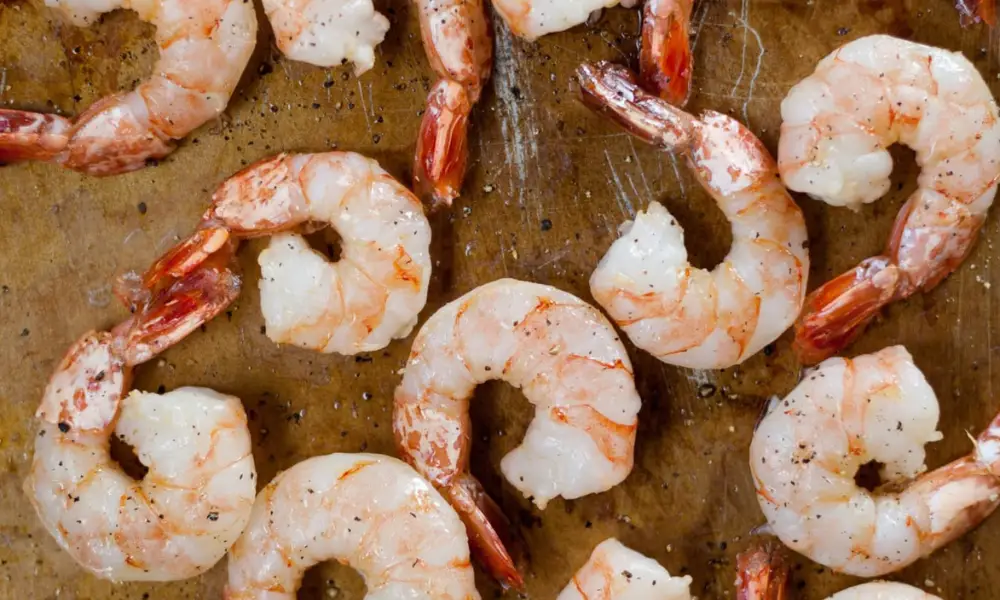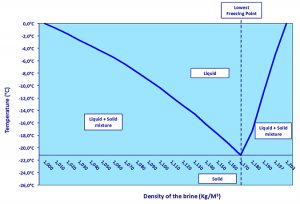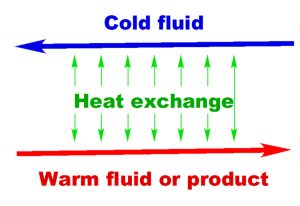Shrimp is one of those versatile proteins that works great in everything from pasta and tacos to soups and appetizers. Having a stash in the freezer means you can whip up a delicious shrimp dish anytime. But what’s the best way to freeze shrimp to maintain quality and flavor? Many people wonder, should you freeze shrimp in water?
Freezing shrimp in water has some surprising benefits compared to other methods Let’s look at why it works and how to do it right,
Why Freeze Shrimp in Water?
Freezing shrimp in water helps:
- Prevent freezer burn
- Stop texture changes from dehydration
- Retain natural juiciness and flavor
Here’s a closer look at these benefits
Prevents Freezer Burn
Freezer burn happens when air reaches the shrimp, causing dehydration and oxidization. This damages texture and taste.
Water acts as a protective barrier against air exposure. It surrounds each shrimp, sealing out the air that ruins quality.
Prevents Dehydration
Like freezer burn, dehydration also ruins texture, making shrimp dry and rubbery.
The ice formed from frozen water keeps shrimp hydrated. As water transitions to ice, it releases moisture. This moisture gets locked in, combating freezer dehydration.
Retains Flavor
Since freezer burn and dehydration degrade shrimp’s natural flavor, preventing these helps retain flavor.
The ice keeps flavors intact by preventing air exposure and moisture loss during freezing.
How to Freeze Shrimp in Water
Freezing shrimp in water takes a few simple steps:
-
Wash fresh shrimp and remove the heads if still attached. Leave shells on.
-
Place shrimp in a rigid plastic or glass container. Glass works best for preventing freezer burn.
-
Fill container with enough cold water to cover shrimp fully.
-
Leave 1-inch headspace for water to expand as it freezes.
-
Seal the container tightly and place in the freezer.
-
Freeze for up to 6 months for best quality.
Some tips when freezing shrimp this way:
-
Use smaller containers for quicker freezing and easier thawing.
-
Chill water before adding shrimp for faster freezing.
-
Label containers with type and date for easy identification.
-
Stack containers closely in the freezer to conserve space.
Thawing Frozen Shrimp
To thaw frozen shrimp:
-
Place the sealed container in the refrigerator.
-
Allow 12-24 hours for ice block to fully thaw.
-
Change the water once thawed and reuse container.
-
Cook thawed shrimp within 1-2 days for optimal freshness.
The water prevents freezer burn but can leach out some flavor over long freezing. Changing water after thawing helps refresh shrimp before cooking.
Should You Keep the Shells On?
Many people freeze shrimp with the shells removed. However, shells help:
-
Protect delicate meat from freezer damage.
-
Preserve moisture content.
-
Maintain texture.
-
Keep flavorful juices and nutrients intact.
Shells are like a natural packaging that insulate shrimp during freezing. Wait to remove shells until after shrimp thaw. Quickly rinse thawed shrimp before peeling.
If freezing peeled shrimp, vacuum sealing gives similar protection to shells.
Raw or Cooked Shrimp: Which Freezes Better?
Raw shrimp freezes better than cooked. Key advantages of freezing raw shrimp:
-
Holds texture and moisture better through freezing and thawing.
-
Retains more natural, fresh flavor.
-
Allows flexibility to cook any style later.
-
Avoids risks of overcooking and rubbery results.
-
Lets you cook portion sizes needed rather than thawing more.
-
Saves time compared to freezing cooked then thawing to reheat.
For best results, freeze raw shrimp at peak freshness right after purchasing. Avoid freezing previously frozen and thawed shrimp again.
Storing Cooked Frozen Shrimp
While raw shrimp freezes best, cooked shrimp can be frozen by:
-
Cooling cooked shrimp quickly on ice first.
-
Draining excess moisture then patting dry.
-
Vacuum sealing in portion sizes.
-
Using within 2-3 months before flavor and texture decline.
Eat cooked frozen shrimp chilled or quickly reheat just until warm. Overcooking previously frozen shrimp creates rubbery, dry results.
Shrimp Freezing Tips
-
Flash freeze shrimp on a tray first for individual pieces then transfer to water container.
-
Add a bit of lemon juice or salt to the freezing water to enhance flavor.
-
For cooked shrimp, freeze in recipe-sized portions to simply reheat later.
-
Place wax paper between layers when freezing in a tray without water.
-
Organize bags of pre-frozen shrimp in a box or paper bag to prevent freezer burn.
Shrimp Freezing FAQs
Still have questions on freezing shrimp? Here are some common freezing questions answered:
Does freezing cook shrimp?
No, freezing raw shrimp does not cook it. Always thaw fully and cook frozen shrimp before eating.
Can you refreeze thawed shrimp?
It’s not recommended. Thawing then refreezing degrades texture and flavor. Only freeze shrimp once.
How long does thawed shrimp last?
Cook thawed shrimp within 1-2 days for best freshness and flavor. Use immediately if thawed under warm water.
Is freezer-burned shrimp safe to eat?
Yes, it’s safe but the texture and taste suffer. Use for stews or dishes where appearance isn’t important.
Can you freeze cooked shrimp in the shells?
It’s better to peel cooked shrimp before freezing. The shells trap moisture that can cause ice crystals.
Enjoy the Benefits of Frozen Shrimp
Freezing shrimp in water delivers delicious, high-quality shrimp any time you need it. The ice protects texture, locks in moisture, and prevents freezer burn or dehydration. Keep shells on raw shrimp for freezing and wait to peel until after they thaw.
So next time you buy fresh shrimp, consider stashing some in the freezer this way. Having a seafood protein ready to go elevates everyday meals into gourmet dishes.

How brine freezing works
Table 1 shows that the most efficient temperature transfer results from immersion in an aqueous solution. One problem is that water freezes at 0 degrees Celsius, and the product needs to be frozen at -18 degrees Celsius. Adding salt (sodium chloride) to water lowers its temperature so that it can freeze. This is called an eutectic system.
Eutectic systems are made up of chemical compounds or elements that have a single chemical make-up that solidifies at a lower temperature than any other make-up. This mix of materials is called the eutectic composition, and this temperature is called the eutectic temperature. The eutectic temperature is the lowest temperature at which the mixture will solidify.
That’s when the salt (NaCl; Na, Cl–) meets the ice. The ions arrange themselves around the polarized water molecules (H2µ Oµ) to make a compound (H2O) (NaCl). This rearrangement requires only small movements of atoms and is therefore a solid phase. Where the exact proportions are observed (about 22 NaCl, at a density of 1. 170 Kg/m3), the mixture behaves as a pure product, described as “eutectic. ” The melting of this eutectic NaCl–H2O mixture is about -21. 2 degrees-C (Table 2).
The diagram of phases (Fig. 2) illustrates the melting temperature of the mixture depending on the water-salt ratio.

So, when the amount of salt is less than the eutectic proportion, we get a mix of water and eutectic that melts above -21°C. 2 degrees-C. And for higher salt levels the result is the eutectic mixture that solidifies at a lower temperature.
Moving the salt and water eutectic mixture around can only happen on the surface of the ice, where the salt crystals and ice crystals meet.
When a layer of eutectic melts is formed (if the temperature is higher than -21. 2 degrees Celsius), the salt is oversaturated and dissolves in the eutectic melt. It can then react with the ice below the liquid film. This phenomenon spreads until there is lack of water or salt to form a new eutectic.
Different techniques used to freeze shrimp
To freeze something, you need to set up a thermic exchange between a warm thing (the shrimp) and a moving cold fluid (Fig. 1). In contact with the “hot” product, the “cold” fluid is heated by lowering the temperature of the product. While the cold fluid stayed in contact with the product, a thermal equilibrium would be reached where the temperatures of the fluid and the product would be equal. This would not be good enough. So, the fluid’s temperature must be kept steady by moving it back and forth between the product and a cooling system that will keep its cool temperature. The efficiency of the system will depend of the heat transfer coefficient of the cold fluid.

Several techniques are used to freeze shrimp:
In air blast freezers, the cold fluid is the air that moves between an evaporator (which cools the air) and the shelves that hold shrimp blocks. The shrimp blocks “absorb” the cold air (which has negative calories) and heat the fluid (the air), which cools by going back into the evaporator. The spiral freezers are using the same principle with the freezing airflow.
Contact plate freezer: In this case the cold fluid circulate in the plates and freeze them. This system needs a contact between the box and the plates. For the block in water, it works well to transfer heat, but not so well for the half-block without water.
Brine freezers technology: discussed in this article.
Other methods are also used, but they are still kept secret because they are too expensive to run because they use liquid nitrogen for cryogenics or aren’t as good at freezing thick boxes as impingement freezers, which are great for IQF but not for boxes. Though impingement freezers can handle thin layers of goods, they can’t handle layers that are too thick.
Table 1 presents the different types of processes used for refrigeration and freezing and their main applications. It also shows the highest heat transfer coefficients that have been measured in real life so that the performance of each type of technology can be compared.
